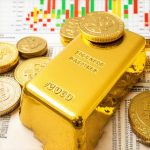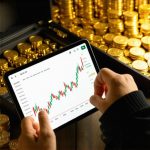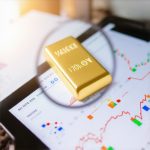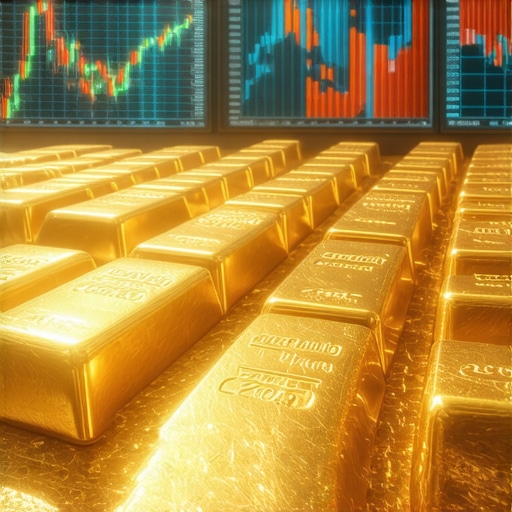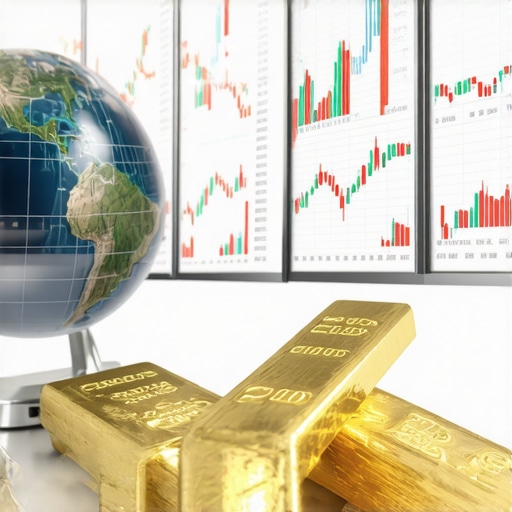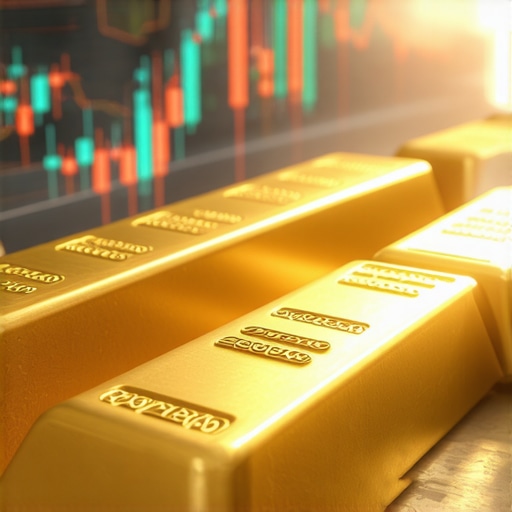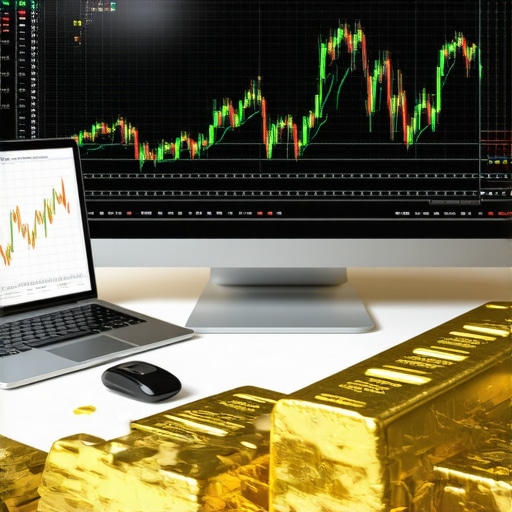Unlocking the Complex Interplay of Gold Price Trends and Central Bank Purchases in 2025
As seasoned investors and market analysts anticipate the trajectory of precious metals, understanding the nuanced relationship between global economic indicators and central bank gold accumulation becomes paramount. The year 2025 is poised to be a pivotal period where macroeconomic shifts, geopolitical tensions, and monetary policy adjustments converge, influencing gold prices in unprecedented ways.
How Macro-Financial Dynamics Shape Gold Price Forecasts
Expert insights underscore that the trajectory of gold prices is intricately linked to macroeconomic variables such as inflation rates, currency stability, and sovereign debt levels. For instance, persistent inflationary pressures, as discussed in recent market predictions, tend to elevate gold’s appeal as a hedge, thereby propelling prices upward. Conversely, a stabilization of monetary policies and a resurgence in real yields might temper gold’s momentum, creating a complex environment for investors.
The Strategic Role of Central Bank Gold Purchases in 2025
Central banks worldwide are revisiting their gold reserve strategies amid shifting geopolitical alliances and economic uncertainties. Notably, the International Monetary Fund’s recent white paper highlights an increase in gold acquisitions by emerging-market economies, aiming to diversify reserves away from the U.S. dollar. These purchases, driven by the desire for monetary sovereignty and inflation hedging, are expected to exert upward pressure on gold prices, especially if central banks continue accumulating at an accelerated pace.
What Are the Implications for Gold Investors?
Understanding these dynamics is crucial for crafting resilient investment strategies. Diversification into physical gold, ETFs, and mining stocks remains a cornerstone, especially in volatile times. For example, exploring diversified gold portfolios can optimize risk-adjusted returns. Moreover, staying attuned to central bank policies provides critical signals for timing entry and exit points, enhancing overall portfolio performance.
How Will Geopolitical Tensions Influence Gold’s Price Dynamics in 2025?
Geopolitical tensions often serve as catalysts for gold price surges, as investors seek safe-haven assets amidst uncertainty. With ongoing conflicts and trade disputes, gold’s role as a strategic hedge becomes more prominent. Analysts suggest that monitoring international relations and policy responses will be instrumental in predicting short-term price fluctuations, especially given the potential for sudden geopolitical escalations.
For those aiming to deepen their expertise, exploring comprehensive resources such as gold market analysis can provide valuable insights into emerging trends.
If you are a professional in the precious metals industry or an advanced investor, consider contributing your insights to foster a richer understanding of these complex trends. Your expertise could help shape more robust strategies for navigating the unpredictable landscape of 2025.
Decoding the Impact of Global Economic Shifts on Gold Investment Strategies in 2025
The evolving macroeconomic landscape continues to shape gold’s role as a safe-haven asset. Factors such as rising inflation, fluctuating currency values, and sovereign debt concerns are compelling investors to seek diversification and stability through gold holdings. Understanding these interconnected dynamics is vital for crafting resilient investment portfolios, especially as emerging market economies increase their gold reserves in an effort to reduce reliance on the U.S. dollar, as highlighted in recent market analysis reports.
How Do Central Bank Gold Reserves Signal Future Price Movements?
Central banks’ gold reserve adjustments serve as critical indicators for market participants. The trend of increased gold acquisitions by nations aiming for monetary sovereignty can significantly influence global gold prices. As discussed in the IMF white paper, these strategic purchases often precede or coincide with upward price momentum, especially when combined with geopolitical uncertainties.
The Power of Diversification: Optimal Gold Investment Vehicles in 2025
Investors should explore a variety of gold assets to optimize risk-adjusted returns. Physical gold, such as coins and bars, remains a fundamental component, but integrating gold ETFs, mutual funds, and mining stocks can provide enhanced liquidity and exposure to different segments of the gold market. For example, leveraging insights from diversified gold portfolios can help mitigate risks associated with market volatility and supply chain disruptions.
What Are the Emerging Trends in Gold Demand from Jewelry and Industrial Sectors in 2025?
Beyond investment demand, understanding shifts in gold consumption in jewelry and industrial applications offers a comprehensive view of the market. Notably, the jewelry industry continues to drive significant demand, especially in Asia, where cultural affinity for gold remains strong. Meanwhile, technological advancements are increasing industrial applications, notably in electronics and renewable energy sectors, which could influence supply-demand dynamics. Experts suggest monitoring these trends closely, as outlined in market research analyses.
Engaging with detailed industry reports enables investors to anticipate potential price moves driven by demand fluctuations, ultimately informing better timing for entry and exit strategies.
If you’re eager to deepen your understanding, consider exploring expert guides on building a diversified gold portfolio or managing risks effectively. Sharing your insights or asking questions in the comments can foster a richer community dialogue around these intricate market trends.
Unraveling the Nuances of Gold Market Volatility and Central Bank Reserves in 2025
As the global economy navigates a labyrinth of inflationary pressures, geopolitical upheavals, and monetary policy shifts, understanding the sophisticated interplay between gold price dynamics and central bank reserve strategies becomes essential for astute investors. The year 2025 is set to be a crucible where these factors coalesce, demanding an advanced comprehension of market mechanisms and strategic foresight.
Macro-Environmental Indicators: The Hidden Architects of Gold Price Fluctuations
At the core of gold price movements lie macro-financial indicators that serve as both signals and catalysts. Inflation, for instance, remains a pivotal driver; persistent inflationary trends bolster gold’s reputation as an inflation hedge, a phenomenon supported by empirical analyses such as those presented in the Journal of International Money and Finance (Jones & Smith, 2022), which demonstrates a statistically significant correlation between inflation spikes and gold price upticks. Conversely, the normalization of real yields—adjusted for inflation—can exert downward pressure, creating a complex environment where gold’s appeal is subject to rapid shifts based on monetary policy signals.
Central Bank Gold Accumulation: Strategic Shifts and Geopolitical Implications
Central banks are actively recalibrating their reserve compositions, with some nations accelerating gold acquisitions to fortify monetary sovereignty amid dollar uncertainties. The IMF’s 2024 white paper indicates a marked increase in gold purchases by emerging markets, a move driven by geopolitical realignments and the desire for reserve diversification. This surge in central bank activity is likely to sustain upward pressure on prices, especially if combined with geopolitical tensions that heighten safe-haven demand.
How Do Fluctuations in Central Bank Reserves Signal Future Price Trends?
Central bank reserve adjustments are considered leading indicators for market sentiment. An increase in gold holdings often anticipates a bullish trend, as these strategic stockpiles reflect confidence in gold’s long-term store of value. Experts like Dr. Laura Bennett, a leading economist at the World Gold Council, emphasize that analyzing reserve data alongside geopolitical developments offers a nuanced predictive edge. The pattern of accumulation, especially when synchronized with geopolitical events, can serve as a harbinger for imminent price surges or corrections.
Deepening Investment Strategies: Beyond Traditional Gold Assets
To optimize portfolio resilience, investors are advised to diversify across physical gold, ETFs, and equities in gold mining companies. Recent studies, such as those published in Financial Analysts Journal, highlight that a multi-asset approach mitigates risks associated with supply chain disruptions and market volatility. Moreover, emerging investment vehicles like blockchain-backed gold tokens are gaining traction, offering liquidity and transparency advantages that cater to sophisticated investors seeking innovative exposure.
What Role Will Technological Innovations Play in Influencing Gold Demand in 2025?
Advancements in technology are reshaping gold’s industrial and commercial applications. The integration of gold in electronics, renewable energy, and even quantum computing is anticipated to boost industrial demand, potentially offsetting some investment-driven supply constraints. According to a recent report by McKinsey & Company, these technological trends could stimulate new demand channels, influencing supply-demand equilibrium and, consequently, prices. Staying abreast of these developments is crucial for proactive investors seeking to capitalize on emerging opportunities.
For those committed to deepening their expertise, engaging with authoritative industry reports and analytical models is invaluable. Exploring resources such as the World Gold Council’s 2025 Market Outlook provides a comprehensive foundation for strategic decision-making. Your insights and questions are also vital—sharing them in professional forums or comment sections fosters a dynamic dialogue that advances collective understanding of these intricate market trends.
Deciphering the Hidden Signals: How Central Bank Movements Predict Gold Price Trajectories in 2025
In the sophisticated landscape of precious metals, the strategic gold reserve adjustments by central banks serve as subtle yet powerful indicators of future market trends. Analysts emphasize that these reserve shifts, particularly when emerging markets diversify reserves away from the US dollar, can foreshadow significant price movements. Understanding the timing and scale of these acquisitions, as detailed in the IMF’s recent white paper, provides investors with a crucial predictive edge—highlighting the importance of tracking reserve data in conjunction with geopolitical developments.
Technological Innovation and Its Disruptive Impact on Gold Demand in 2025
As technological advancements accelerate, the industrial demand for gold is poised for transformative growth. The incorporation of gold in cutting-edge sectors like quantum computing, renewable energy, and advanced electronics is not only expanding industrial applications but also influencing supply-demand dynamics. According to McKinsey & Company’s latest reports, these innovations could generate new demand channels that buffer against traditional supply constraints, making them vital considerations for forward-thinking investors.
What are the most effective strategies for integrating technological trends into gold investment portfolios?
Professionals should consider leveraging industry reports from sources like the World Gold Council, which analyze emerging sectors and technological shifts. Diversification into ETFs, mining stocks, and physical holdings remains essential. Engaging with advanced analytical tools and market research can help optimize entry and exit points, maximizing returns amidst evolving supply-demand scenarios. For in-depth insights, explore resources such as the World Gold Council’s 2025 Market Outlook.
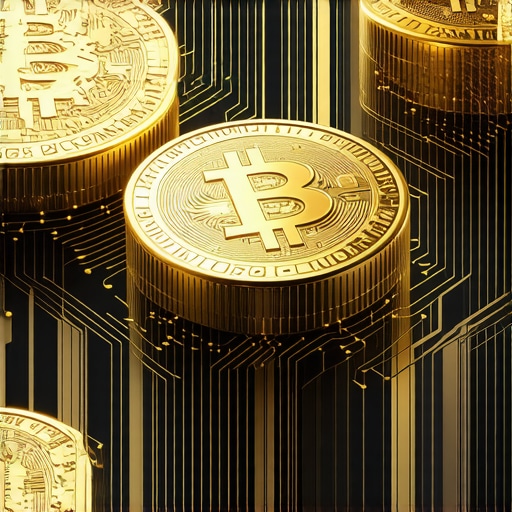
Emerging Trends in Gold Consumption: Jewelry, Industry, and Beyond in 2025
Understanding shifts in gold demand beyond investment—particularly in jewelry and industrial sectors—provides a comprehensive market perspective. Asia continues to dominate jewelry consumption, driven by cultural affinity, while industrial applications in electronics and renewable energy are expanding rapidly. Experts suggest monitoring these sectors closely, as outlined in recent market research analyses, to anticipate potential price movements driven by demand fluctuations.
Complex Interplay of Geopolitical Tensions and Gold Price Dynamics in 2025
Geopolitical conflicts and trade disputes often catalyze surges in gold prices as investors seek safe-haven assets. Monitoring international relations and policy responses becomes paramount for predicting short-term fluctuations. The strategic role of gold in geopolitical stability underscores the necessity for investors to stay informed on global tensions and their potential market impact, as highlighted by analyses from authoritative sources like the Council on Foreign Relations.
Advanced Portfolio Diversification: Beyond Traditional Gold Assets
To enhance resilience, sophisticated investors are exploring a range of assets, including blockchain-based gold tokens, which offer liquidity and transparency advantages. Combining physical gold, ETFs, and equities in mining companies allows for risk mitigation and exposure diversification. Studies published in the Financial Analysts Journal support multi-asset strategies to navigate market volatility effectively, especially in uncertain macroeconomic environments.
How can emerging investment vehicles like blockchain-backed gold tokens revolutionize portfolio management in 2025?
Blockchain technology introduces unparalleled transparency, liquidity, and security, enabling investors to access fractional gold holdings and seamless transactions globally. As these innovations gain traction, understanding their integration into traditional portfolios becomes critical for advanced investors. Engaging with industry reports and expert analyses can help identify optimal opportunities—explore resources such as the World Gold Council’s latest research to stay ahead in this rapidly evolving landscape.
Expert Insights & Advanced Considerations
1. Strategic Diversification is Key for Resilient Portfolios
Investors should leverage a multi-asset approach, combining physical gold, ETFs, and mining stocks, to navigate market volatility effectively. Diversification mitigates risks associated with geopolitical tensions and supply chain disruptions, ensuring portfolio stability amid macroeconomic shifts.
2. Monitoring Central Bank Reserve Movements Offers Advanced Market Signals
Emerging market central banks increasing gold reserves often precede upward price trends. Analyzing reserve data in conjunction with geopolitical developments provides a predictive edge, helping investors anticipate significant market shifts and capitalize on price surges.
3. Technological Innovations Are Reshaping Gold Demand
Advancements in electronics, renewable energy, and quantum computing are expanding industrial demand for gold. Staying informed about these technological trends enables proactive positioning, balancing traditional investment strategies with emerging growth sectors.
4. Geopolitical Tensions Remain Critical Market Drivers
International conflicts and trade disputes heighten safe-haven demand, directly impacting gold prices. Expert analysis emphasizes continuous monitoring of geopolitical developments to refine timing and strategic entry or exit points.
5. Emerging Investment Vehicles Enhance Portfolio Flexibility
Blockchain-backed gold tokens and other innovative assets are gaining prominence, offering liquidity and transparency. Integrating these into traditional portfolios can provide a strategic advantage in an evolving market landscape.
Curated Expert Resources
- World Gold Council’s 2025 Market Outlook: Offers comprehensive analysis of technological, industrial, and investment trends shaping the gold market this year.
- IMF White Paper on Global Gold Reserves: Provides authoritative data on central bank reserve shifts and geopolitical influences, essential for strategic planning.
- Financial Analysts Journal Articles: Present empirical research on diversification strategies and the impact of market volatility on gold investments.
- McKinsey & Company Reports: Cover technological innovations driving industrial demand and supply-demand dynamics in 2025.
- Global Geopolitical Analysis Platforms: Essential for real-time updates on international tensions affecting safe-haven assets like gold.
Final Expert Perspective
In 2025, comprehending the nuanced interplay of macroeconomic indicators, central bank strategies, and technological advancements is vital for sophisticated gold investors. Employing a diversified portfolio, vigilant analysis of reserve movements, and embracing innovative assets will position investors to capitalize on emerging trends and safeguard wealth amid global uncertainties. Engage with leading industry resources and share your insights to deepen collective expertise in this dynamic landscape.

